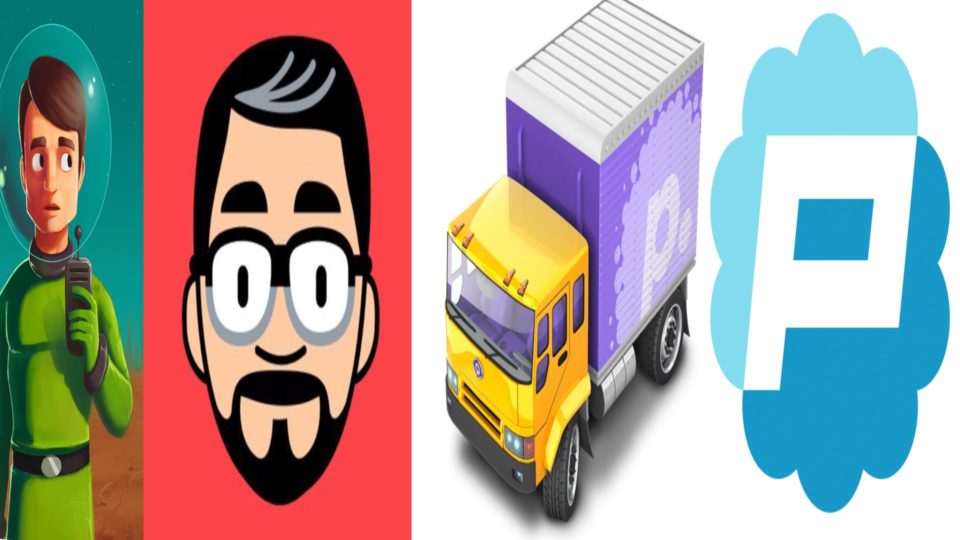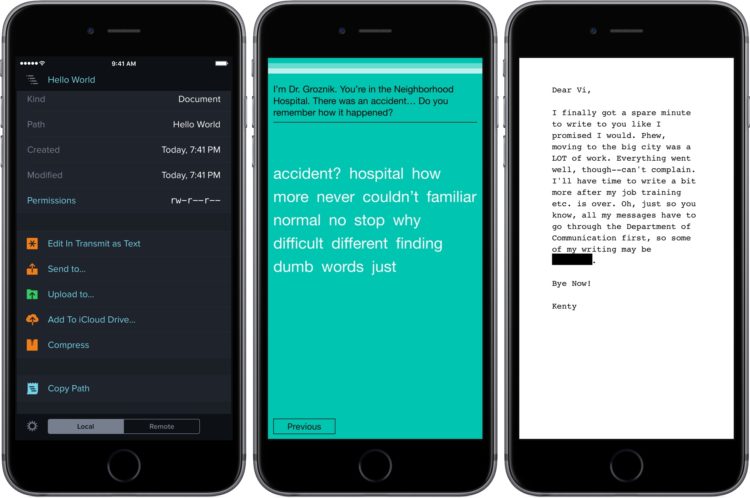
Panic Inc. is one of the most loved and long-standing companies within the Apple community. They’ve made incredible apps like Coda (a fantastic text editor), Transmit (an intuitive FTP client), and many more over the years for both iOS and macOS. In addition, they’ve teamed up with other folks like Campo Santo to make immersive games such as Firewatch.
A few months back I was able to interview Cabel Sasser of Panic, while talking about iOS games with incredible soundtracks. At the time we were talking about the fun sci-fi game, Space Age.
This time I was able to catch up with Neven Mrgan. Neven is a designer and writer over at Panic, and has worked on many apps and exciting games. He was nice enough to answer a few questions I had for him.
What’s the key to great storytelling when writing for a game?
Neven Mrgan – A good story is a good story, of course, but there are two things I consider when writing for games:
The story should match the mechanic; the two should constantly feed off each other, reinforce each other, and look for opportunities to work together. Space Age is a game about exploring the unknown (and finding the familiar in it), so it invites the player to investigate and look around, while referencing familiar genres and game styles. Blackbar is a game about frustration and overcoming arbitrary boundaries, and it’s often frustrating to play, while letting the player do more than seems possible given the very restrained graphics and gameplay.
The second thing I like to keep in mind is that the player is doing things rather than reading about them. How it feels emotionally for the player to perform some move in the game—open a door, have an epiphany, say goodbye—is part of the game design, and it includes not just the consumption of the emotion (as would be the case in most books, movies, etc.) but also the work required to arrive at it. This is what’s particularly satisfying about the rare times when a movie lets you draw a conclusion yourself based on scant evidence, as opposed to digesting and summarizing it for you.

How has your design work for games influenced your app work with Panic, and vice versa?
When designing games, I try to keep in mind the principles of good software design, such as “don’t waste the user’s time”, “make important things obvious”, “teach the user progressively, not in one big documentation dump”. Working on games has probably helped me maintain a sense of fun about Panic’s “serious” apps—though that’s always been a big part of Panic’s identity.
What’s the number one reason you enjoy working on apps and software?
I still remember the first time I successfully ran a program I had written all by myself. It felt like reading out a magic spell and seeing furniture come to life. Once you cross a certain threshold of complexity, software begins acting in ways even you, its author, couldn’t have quite predicted. That’s a rewarding kind of creativity I respond to as much as I do to visual arts.

What other apps/teams do you admire? Anyone we might not know about yet?
Some of my favorite game developers at the moment are Terry Cavanagh, Nathalie Lawhead, and Davey Wreden. I’d love to make things they make.
My favorite app right now is Procreate. It’s elegant, thoughtful, and deep.
What apps do you use at the Panic office throughout the day?
One third of my life is spent in Photoshop. Another fifth or so, I’m in Coda and some small, TOP SECRET internal apps. (Of course, I’m also a user of Dropbox, Slack, and all the other usual suspects of modern office work.)
Bonus question: What’s your favorite color scheme for the Panic sign?
Yellow/Purple looks the best at night, I think.
If you’d like to catch up with Neven, follow him on Twitter or visit the Panic site to check out what he’s up to!
Apps shown above:
The Incident – $0.99 – Download
Space Age – $0.99 – Download
Transmit – $9.99 – Download
Grayout – $2.99 – Download
Blackbar – $2.99 – Download

